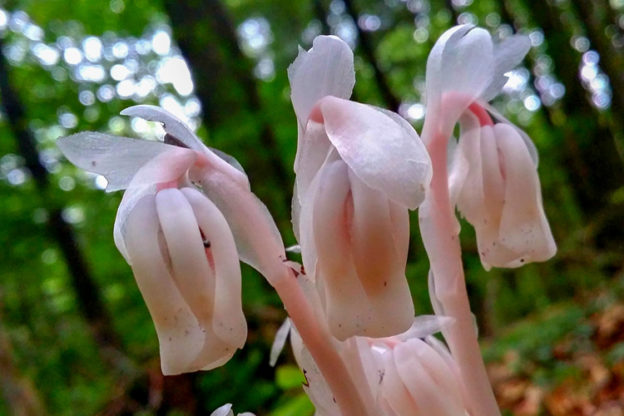You may have spotted a strange little white flower growing in dark parts of the forest—often around beech trees—and mistaken it for a fungi, but Indian Pipe (a.k.a. Ghost Pipe) is actually an amazing kind of plant.
It contains no chlorophyll so, unlike most plants, it is white or pale pink in color instead of green. Without chlorophyll, it can’t make energy from the sun through photosynthesis, so how does this “ghostly” little flower get its food? Indian Pipe is parasitic, stealing its nutrients from certain fungi that in turn have a symbiotic relationship with tree roots.
Because it doesn’t need sunlight for energy, it can often be found in very shady spots on the forest floor and its ephemeral (short) growth cycle means it only appears for brief periods, usually after a rain that breaks a longer dry spell.
With their “ghostly” pallor and “sinister” parasitic appetite, these fascinating flowers make for a great way to celebrate Halloween, don’t you think? Enjoy these five photos from our annual Picture This: Your Great Outdoors photo contest and have a happy, spooky Halloween!

Indian Pipe © Robert DesRosiers

Indian Pipe © Joy Yagid

Indian Pipe © Steven Basso

Indian Pipe © Rachel Gorman






